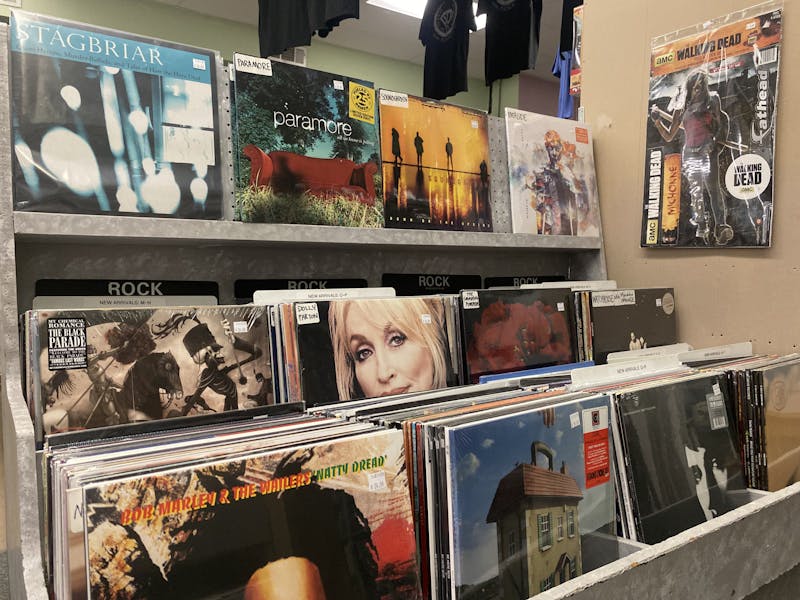*Names have been changed for anonymity.
In an increasingly digital age, Instagram has created an incredibly high standard of what a "perfect life" should look like. Users can create heavily stylized images that include layers of filters and edits to create a "candid" photo that looks like it was snapped on a casual whim. It's an easily accessible platform where the food you eat, the vacations you take, and the a you buy are on display for millions of other users to view and critique. This can sometimes create a competition of sorts where users are constantly comparing themselves to the psuedo-fabulous lives of their peers.
After its launch in 2010 and acquisition by Facebook in 2012, Instagram has rapidly become one of the most popular social media platforms. Although Facebook still prevails as the most widely used, according to a 2017 Pew Research Center study, more than half of online adults ages 18 to 29 use Instagram, making it the second most popular platform among adolescents and young adults.
Instagram has been criticized for its lack of authenticity, as well as associated pressures on young women to conform to societal beauty and fitness standards. These expectations are only further amplified with the presence of a myriad of celebrity accounts and sponsored posts urging users to buy the latest beauty or fad diet product.
Even without corporate sponsorships, Instagram can pose a series of challenges to the average user. Allison Rogers, a third-year student computer science student at USC, has an account with almost 900 followers. She mentioned the sometimes-tedious steps she takes before posting a photo.
“Usually I’ll think about posting something for a couple days. And then when I have the time I’ll sit down and edit it, crop it and then post it,” Rogers says.
She emphasized the importance of posting quality content that reflects her personal values, but also acknowledged the societal pressures that Instagram is infamous for harboring.
“As much as I hate to say it, it’s a lot about self image. And it’s absolutely a process,” she says. “All the pictures are meaningful to me, and I’ll put them up to remind myself about who I am in my life at this moment, but at the same time I rarely post something that I don’t think is visually appealing. That’s the part of me that’s vain. I shy away from pictures of myself because I don’t want to be part of that culture, but by excluding myself I’m not necessarily being original; I just have a different standard for the image I create online.”
Recently, many users have adapted to a new Instagram trend — creating Finstagrams, or “fake Instagrams.” But what exactly is a fake Instagram? One student analogized Finstagrams to “a group chat with all of your friend groups that nobody is obligated to respond to.”
Finstagrams started as a way for individuals to post images that might be considered inappropriate for employers or family members to see — think partying, alcohol, drugs, etc. The creation of this Instagram subculture was very much a reaction to the dominance of the Instagram ideal standard. Although Finstas are still a great place to document risqué behaviors, for many they have evolved into something more meaningful.
“I made my true finsta spring of sophomore year because I was feeling a lot of stress from classes and wanted a platform for my inner circle of friends to allow both them and myself to laugh at the stress rather than get overwhelmed by it. My finsta isn’t me partying or anything, its mostly pictures of me laying down in the street and that kind of thing,” says Lauren Phillips, a third-year biomedical engineering student.
Despite the prevalence of its mainstream counterpart, there are surprisingly little data regarding Finstagrams. There is no real research that suggests demographic or regional statistics about Finstagram account holders. This could be due to the nature of the medium itself. By creating a Finsta, users are deliberately separating themselves and the content they choose to post from their main accounts.
While some turn to Finstas as a mechanism of escaping the constant influx of advertisements and junior varsity Vogue photoshoots, others use Finsta as a way to relax and share stories with friends. Cassidy Spencer, a second-year visual communications student, noted the differences between her two accounts.
“I initially created my primary Instagram account sometime in sixth grade, evidenced by the ridiculously over edited pictures at the beginning of my feed,” Spencer says.
She decided to make a Finstagram halfway through her freshman year at USC, after waiting a few months to see if the trend was just a fad. She noted that many of her friends also created Finstagrams and enjoyed using them.
“I realized that every day is full of silly little anecdotes or embarrassing moments that I could share with the people that I knew well… [My Finsta] has become over time less about embarrassing moments and drunk stories, and more just telling people mundane things that don’t feel worthy of other social media,” she continues. “All of my friends and general acquaintances follow my real Instagram account, whereas I pretty much only let other Finstas of close friends follow my Finsta. It all sounds so silly now that I’m explaining it.”
Emily*, a third-year student, made a Finsta last November after a series of awkward encounters with coworkers and acquaintances.
“Honestly, this might sound pathetic, but literally there are just so many unfortunate things that happen in my life that I want to share. So I made a Finsta so other people can laugh at my life,” she says.
She expressed concern over exposure of inappropriate content on her main account that could be judged by family members and future employers.
“It’s private because 1) not everyone needs to know everything that’s on there and 2) it’s not all appropriate. I’ll probably delete it within the next year, definitely before I start looking for a real job,” Emily says.
Fake accounts provide the opportunity for users to share the most intimate or mundane moments of their lives in a controlled environment, without fear of judgment from others. They have created a movement of personal empowerment for adolescents and young adults. No longer strictly used for documentation of promiscuous or immoral behaviors, fake Instagrams are now often used to share unfortunate anecdotes, and tales of mishap and casual misfortune. Although Finstagrams may only be a temporary solution to a long-term problem, they serve their purpose as a way of escaping the organized chaos of social media. It is impossible to capture true reality in a pixelated box — regardless if posted on a Finsta or not.



